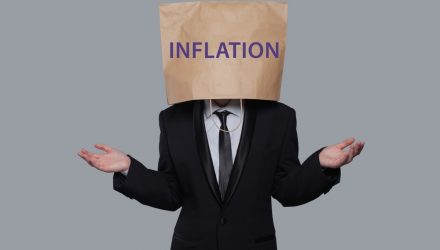May’s CPI is looming large over markets and investors today. For some, it’s been a shock, as many believed that perhaps we had seen the peak in March, with a small decline in April seeming to indicate the trend might finally be changing. For others, it’s just confirmation of the difficulties to come.
KFA Funds offers a suite of ETFs depending on your outlook for where to go from here, from investing for inflation to those that believe we are experiencing stagflation or will be in the coming months, to those that are seeking deflation positioning in the long-term. Either way, all are positioned for a change and expected slowing in the growth of the U.S. economy, offering different investment approaches depending on what strategy seems most favorable for your portfolios.
“Inflation robs us all of purchasing power. Having inflation-linked assets in a portfolio is a key asset allocation. If all investors are exposed to the loss of purchasing power, then all investors should consider ways to mitigate or hedge that risk. There is no reason to not have some protection for inflation in the portfolio,” said Nancy Davis, founder of Quadratic Capital Management, in a communication to VettaFi.
Inflationary Play with Managed Futures
Managed futures have become a popular investment during this period of inflation as they can provide non-correlated hedging opportunities for portfolios. The KFA Mount Lucas Index Strategy ETF (KMLM) from KFAFunds, a KraneShares company, invests in futures contracts in commodities, currencies, and global bond markets and on June 7 brought in $38.75 million in inflows.
KMLM’s benchmark is the KFA MLM Index, and the fund invests in commodity currency and global fixed income futures contracts. The underlying index uses a trend-following methodology and is a modified version of the MLM Index, which measures a portfolio containing currency, commodity, and global fixed income futures. The index contains futures contracts in 11 commodities, six currencies, and five global bond markets.
The index and KMLM offer possible hedges for equity, bond, and commodity risk and have demonstrated a negative correlation to both equities and bonds in bull and bear markets. Investing in managed futures offers diversification for portfolios and carrying them within a portfolio can potentially help mitigate losses during market volatility and sinking prices.
KMLM rebalances monthly and has an expense ratio of 0.90%.
Positioning for Stagflation
The Quadratic Interest Rate Volatility and Inflation Hedge ETF (IVOL) is managed by Nancy Davis and is designed to have a twofold hedge against an increase in fixed income volatility and/or an increase in inflation. The fund also seeks to maximize yield curve increases, either brought about by long-term interest rates increasing or short-term interest rates falling. Both are tied to big-equity market declines.
The fund invests in a mix of U.S. Treasury Inflation-Protected Securities (TIPS) of any maturity, which are U.S. government bonds whose principal amounts increase with inflation. It also invests in long options directly tied to the shape of the U.S. interest rate swap curve, which steepens when the spread between longer-term debt instrument swap rates and shorter-term debt instruments grows larger, and flattens when the spread grows smaller, and inverts when the spread is negative.
IVOL is actively managed and carries an expense ratio of 1.05%.
Looking Long with Deflation
The Quadratic Deflation ETF (BNDD) is also managed by Nancy Davis and is a fixed income, ESG-focused, actively managed ETF that seeks to benefit from lower growth, a reduction in the spread between short- and long-term interest rates, deflation, and lower or negative long-term interest rates. It invests in U.S. Treasuries as well as options that are tied to the shape of the U.S. interest rate swap curve. Quadratic Capital Management is the sub-advisor of the fund and its active manager.
BNDD seeks to hedge against deflation risk while creating positive returns at times when the U.S. interest rate curve flattens or inverts. It invests in Treasures with different maturities either directly or via ETFs that invest in Treasuries. The options the fund uses are tied to the U.S. interest rate curve and include long options, long spreads, and butterflies (an options strategy that uses both bear and bull spreads) in an attempt to limit loss by the fund.
BNDD carries an expense ratio of 0.99%.
For more news, information, and strategy, visit the China Insights Channel.

